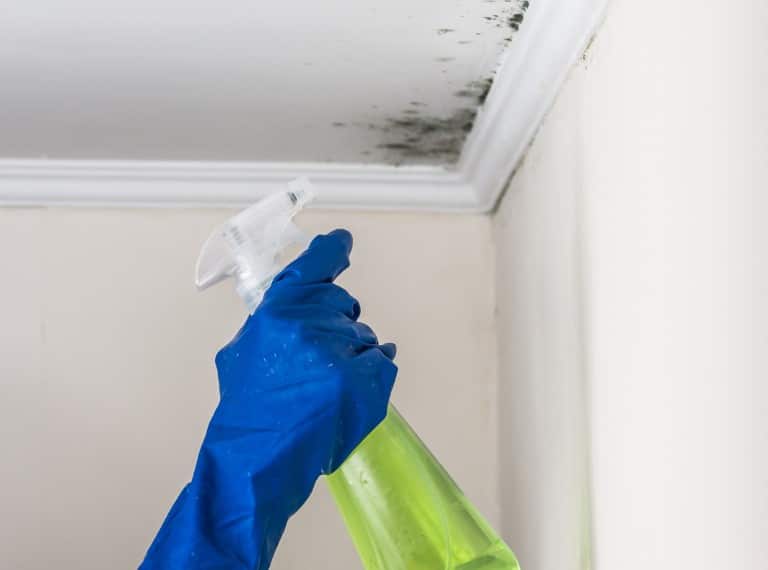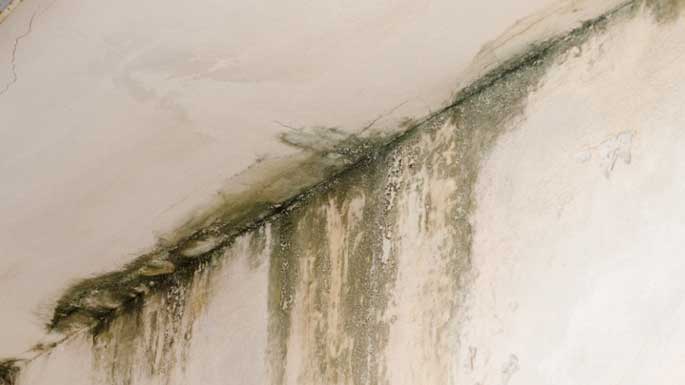
Essential Fire Safety Tips for the Holiday Season
October 21, 2025Steps to Take After Finding Mold in Your Home
Mold in your home is more than just a cosmetic issue; it can lead to serious health concerns and structural damage if not addressed promptly and properly. At JDR Restoration, we understand how overwhelming it can be to discover mold growing in your living space. Taking the right steps quickly is crucial to ensure the safety of your family and to prevent the issue from escalating.
1. Do Not Disturb the Mold
The first reaction many homeowners have is to clean the mold themselves. However, touching or scrubbing mold without proper containment and protective gear can release mold spores into the air, spreading the contamination to other areas of the house. Avoid using fans or HVAC systems, as they can disperse airborne spores further.
If the affected area is small (less than 10 square feet), it may be manageable with proper precautions. However, if the mold is widespread or you suspect hidden mold behind walls, ceilings, or floors, it’s important to contact a certified mold remediation professional.
2. Assess the Extent of the Mold Growth
Understanding how far the mold has spread helps determine the level of response required. Look for visible signs of mold in high-risk areas such as:
- Bathrooms
- Basements
- Kitchens
- Around windows
- Inside HVAC systems
In addition to visual inspection, pay attention to persistent musty odors, especially in areas with poor ventilation or moisture issues. Mold often grows in hidden places, including behind wallpaper, under flooring, and inside insulation.
3. Identify the Source of Moisture
Mold cannot grow without moisture. Identifying and eliminating the source of water intrusion is a critical step in resolving the issue. Common sources include:
- Leaky pipes
- Roof leaks
- Condensation from poor insulation
- Flooding
- High humidity
Once the moisture source is identified, take immediate action to stop it. This may involve repairing plumbing leaks, sealing roof damage, or improving ventilation. Without addressing the moisture issue, any mold removal efforts will be temporary.
4. Document the Damage
Before beginning any cleanup or repairs, document the affected areas. Take clear photographs or videos of the mold and any related damage, such as water stains, rotting wood, or peeling paint. This documentation is especially important for:
- Home insurance claims
- Contractor estimates
- Legal protection if you’re a tenant or landlord
Accurate records can help streamline the restoration process and support claims if insurance coverage applies.
5. Contact a Professional Mold Remediation Company
DIY mold cleanup is not recommended for significant infestations or mold in HVAC systems, behind walls, or in large surface areas. Hiring a certified mold remediation company like JDR Restoration ensures a safe, thorough, and legally compliant removal process.
Professional services typically include:
- Moisture source investigation
- Containment of affected areas
- HEPA vacuuming and air filtration
- Removal and safe disposal of contaminated materials
- Use of antimicrobial treatments
Choosing an experienced and licensed contractor is crucial to preventing recurrence and protecting the structural integrity of your home.
6. Isolate the Area if You Must Wait for Help
While waiting for professional assistance, take steps to prevent the mold from spreading. If safe to do so, isolate the affected area by closing doors and using plastic sheeting to seal it off. Do not attempt to dry or clean the mold yourself unless instructed by a professional, as this could worsen the situation.
7. Turn Off HVAC Systems
If mold is found near or inside HVAC vents, shut down the system immediately. Mold spores can travel through ductwork and contaminate clean areas of the home. After remediation, the HVAC system should be inspected and cleaned by professionals before being used again.
8. Protect Yourself and Others
Avoid entering mold-contaminated areas unless necessary. If you must go near the affected site, wear protective gear such as:
- N95 respirator or higher
- Non-porous gloves
- Safety goggles
- Disposable coveralls or long sleeves and pants
Children, elderly individuals, and those with respiratory conditions or compromised immune systems should be kept away from mold-affected areas entirely.
9. Check for Insurance Coverage
Some homeowners’ insurance policies cover mold remediation if the mold resulted from a covered peril, such as a burst pipe. Review your policy or contact your insurance provider to understand your coverage. Mold resulting from neglect or ongoing maintenance issues may not be covered.
JDR Restoration can assist with documenting damage and working with insurers to streamline your claim.
10. Understand the Health Risks of Mold Exposure
Mold can pose serious health risks, especially for individuals with allergies, asthma, or weakened immune systems. Exposure may cause:
- Nasal congestion
- Coughing or wheezing
- Eye and skin irritation
- Headaches
- Fatigue
In more severe cases, toxic mold species such as Stachybotrys chartarum (black mold) may contribute to long-term health issues. This makes swift action essential to protect your family’s well-being.
11. Do Not Paint or Caulk Over Mold
Covering mold with paint or caulk may hide the problem temporarily but will not solve it. Mold will continue to grow beneath the surface and eventually reappear. Always remove mold completely and ensure the surface is clean and dry before applying any finishes.
12. Replace Contaminated Materials
Porous materials that have been exposed to mold, such as drywall, carpet, insulation, or ceiling tiles, are difficult to clean thoroughly and often need to be discarded. Non-porous materials like metal or glass can typically be cleaned and disinfected.
JDR Restoration follows industry best practices to determine which materials can be salvaged and which should be replaced for safety and longevity.
13. Prevent Future Mold Growth
Once the mold has been removed, take proactive steps to prevent it from returning. These include:
- Controlling indoor humidity (ideally below 50%)
- Using exhaust fans in kitchens and bathrooms
- Fixing leaks promptly
- Ensuring proper drainage around the home’s foundation
- Cleaning and maintaining HVAC systems regularly
- Using mold-resistant drywall or paints in moisture-prone areas
JDR Restoration can recommend tailored solutions based on your property’s specific risk factors.
14. Schedule Regular Inspections
Especially in humid climates or older homes, routine inspections can help detect early signs of moisture or mold before they become serious. Periodic checks of basements, attics, crawl spaces, and around plumbing fixtures are vital to maintaining a healthy environment.
If you’ve had mold before, consider scheduling annual inspections with a professional remediation team.
15. Stay Informed and Vigilant
Mold is a persistent problem that often thrives unnoticed until it becomes visible or symptomatic. Educate yourself and your family about the signs of mold growth and how to maintain a moisture-controlled home environment.
JDR Restoration offers professional consultation and inspection services to homeowners who want peace of mind and a mold-free living space.
Take Control of Mold Before It Spreads
Finding mold in your home can be a stressful experience, but with the right approach, it is manageable. Acting quickly to identify the source, contain the problem, and engage professional help is the best way to protect your health and property.
At JDR Restoration, we are committed to helping homeowners handle mold-related issues with confidence and care. If you’ve discovered mold in your home, reach out today for expert remediation tailored to your specific needs.




